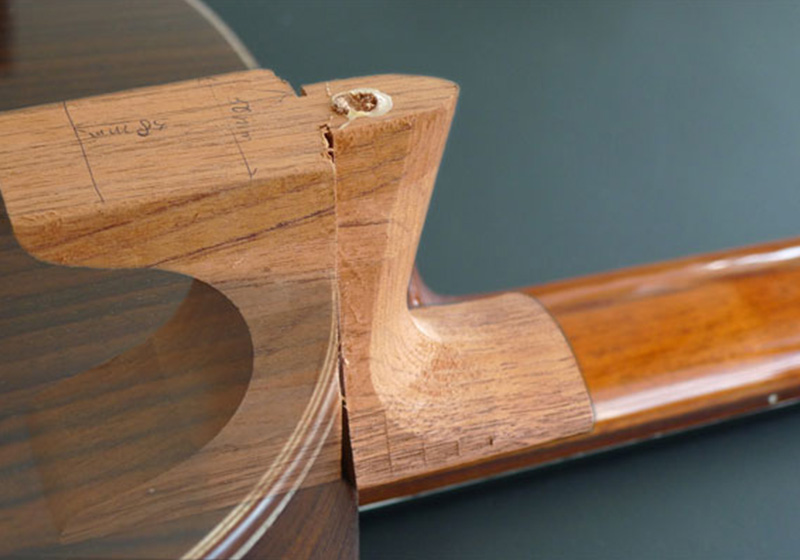What is a "Spanish heel joint"?


In the construction of guitars, there is a stark distinction made between the two ways of joining together the neck and the body (the name given to the sound box). Since the classical guitar as we know it today originally comes from Spain, the neck-body connection that originated there is called "Spanish". The advantage here is that the neck protrudes so far into the body that the two pieces almost become one.
When looking into the soundhole of a classical guitar, a block of wood can be seen at the inner upper end of the body. If the guitar is a "Spanish heel joint", the wood you see there is the same piece as the neck. If there is a cut and the piece is reassembled, it is not considered a “Spanish heel”. While this is a more precise and delicate process, the sounds produces by such guitars is often superior thanks to the resonance of the joined body and neck. In an original Spanish heel joint, the joining of these pieces happens very early in the building process.
Alternative construction
Guitar necks and bodies can be made separately and then the parts are joined together. This method is known as "German" construction, thanks to Germany’s burgeoning influence over guitar construction. In the U.S., this set-neck is known as a "dovetail," which denotes a hidden dovetail joint. However, guitar necks can also simply be glued to the body, inserted a few millimeters into the body, or screwed on. This can be a much simpler solution both in the long and short term, as it not only allows manufacturers to create guitars with less-skilled individuals, but it also makes for simpler assembly later in the process. A neck that has been retrofitted can be recognized by the so-called "top block" inside the body, which is used to attach the neck. If the top block doesn’t match the neck from the outside, the neck was connected to the body only after both parts were almost finished.
At Artesano, the Maestro, Flamenco guitar and all Sonata, Nuevo models are built in original "Spanish heel joint".
All Estudiante models use the "German" construction method.